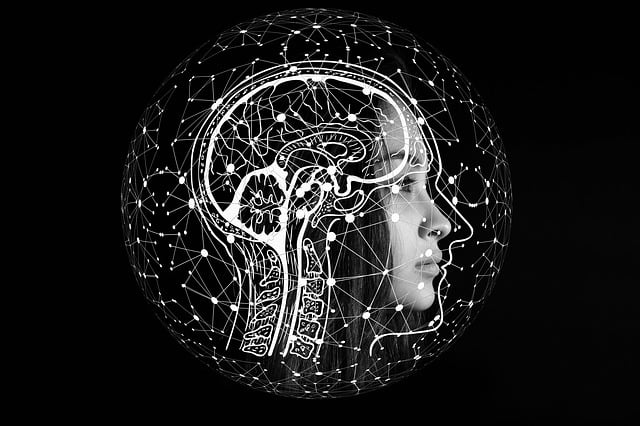-
Table of Contents
- The Father of Artificial Intelligence: A Comprehensive Guide
- Who Was Alan Turing?
- The Turing Test: A Milestone in AI
- The Evolution of AI After Turing
- Modern AI: Building on Turing’s Legacy
- Why Turing’s Work Still Matters
- Case Study: AI in Healthcare
- Challenges and Future Directions
- Lessons from the Father of AI
- Conclusion
The Father of Artificial Intelligence: A Comprehensive Guide

When discussing the origins of artificial intelligence (AI), one name stands out as the “father of artificial intelligence”: Alan Turing. His groundbreaking work laid the foundation for modern AI, and his contributions continue to shape the field today. If you’ve been struggling to understand the roots of AI or the significance of its pioneers, this article will provide clarity and insight. We’ll explore Turing’s legacy, the evolution of AI, and how his ideas remain relevant in today’s technological landscape.
Who Was Alan Turing?
Alan Turing was a British mathematician, logician, and computer scientist whose work during World War II and beyond revolutionized the way we think about machines and intelligence. Born in 1912, Turing’s contributions to cryptography, computer science, and AI are unparalleled. His concept of the Turing Machine, a theoretical device that manipulates symbols on a strip of tape, became the basis for modern computing.
During World War II, Turing played a pivotal role in breaking the German Enigma code, significantly shortening the war and saving countless lives. After the war, he turned his attention to the question of whether machines could think, a topic that would later define the field of AI.
The Turing Test: A Milestone in AI
In 1950, Turing proposed a simple yet profound test to determine whether a machine could exhibit intelligent behavior. Known as the Turing Test, it involves a human evaluator interacting with both a machine and a human without knowing which is which. If the evaluator cannot reliably distinguish between the two, the machine is considered intelligent.
This test remains a cornerstone of AI research and has inspired countless advancements in natural language processing and machine learning. For example, modern chatbots like OpenAI’s GPT-4 are designed to mimic human conversation, pushing the boundaries of what Turing envisioned.
The Evolution of AI After Turing
While Turing is often referred to as the “father of artificial intelligence,” his work was just the beginning. The field of AI has evolved dramatically since the 1950s, with contributions from numerous researchers and institutions. Let’s explore some key milestones in AI’s development.
- 1956: The Dartmouth Conference – Often considered the birth of AI as a formal discipline, this conference brought together leading researchers to discuss the potential of machines to simulate human intelligence.
- 1997: IBM’s Deep Blue – This chess-playing computer defeated world champion Garry Kasparov, showcasing the power of AI in strategic decision-making.
- 2011: IBM’s Watson – Watson won the game show Jeopardy!, demonstrating AI’s ability to understand and process natural language.
- 2016: AlphaGo – Developed by DeepMind, this AI system defeated the world champion in the complex game of Go, marking a significant leap in machine learning.
Modern AI: Building on Turing’s Legacy
Today, AI is integrated into nearly every aspect of our lives, from virtual assistants like Siri and Alexa to self-driving cars and personalized recommendations on streaming platforms. These advancements owe much to Turing’s foundational ideas. For instance, his work on algorithms and computation paved the way for the development of neural networks, which are now the backbone of deep learning.
Moreover, Turing’s vision of machines that can think and learn continues to inspire researchers. Projects like OpenAI’s GPT-4 and Google’s Bard are pushing the boundaries of what AI can achieve, bringing us closer to Turing’s dream of truly intelligent machines.
Why Turing’s Work Still Matters
Alan Turing’s contributions to AI are not just historical footnotes; they remain highly relevant today. His ideas about machine intelligence, algorithms, and computation continue to influence modern research and development. Here are a few reasons why Turing’s work is still significant:
- Foundation of Computer Science – Turing’s concept of the Turing Machine laid the groundwork for modern computing and programming.
- Ethical Considerations – Turing’s work raises important questions about the ethical implications of AI, such as privacy, bias, and accountability.
- Inspiration for Innovation – Turing’s vision of intelligent machines continues to inspire researchers and developers to push the boundaries of what AI can achieve.
Case Study: AI in Healthcare
One area where Turing’s legacy is particularly evident is healthcare. AI-powered systems are now used to diagnose diseases, predict patient outcomes, and even assist in surgeries. For example, IBM’s Watson for Oncology analyzes medical data to recommend personalized cancer treatments. This application of AI aligns with Turing’s vision of machines that can think and solve complex problems.
Another example is Google’s DeepMind, which developed an AI system capable of predicting protein structures with remarkable accuracy. This breakthrough has the potential to accelerate drug discovery and improve our understanding of diseases.
Challenges and Future Directions
While AI has made tremendous progress, it still faces significant challenges. Issues like data privacy, algorithmic bias, and the ethical use of AI remain unresolved. Turing’s work reminds us of the importance of addressing these challenges as we continue to develop intelligent systems.
Looking ahead, the future of AI is both exciting and uncertain. Researchers are exploring new frontiers, such as quantum computing and artificial general intelligence (AGI), which aims to create machines with human-like reasoning abilities. These advancements will build on Turing’s legacy and shape the next chapter of AI.
Lessons from the Father of AI
Alan Turing’s life and work offer valuable lessons for anyone interested in AI. His curiosity, creativity, and determination serve as a reminder of the importance of innovation and perseverance. By studying Turing’s contributions, we can gain a deeper understanding of AI’s potential and its challenges.
For those struggling to grasp the complexities of AI, Turing’s story provides a clear starting point. His ideas about machine intelligence and computation offer a framework for understanding the field’s evolution and its future direction.
Conclusion
Alan Turing, the “father of artificial intelligence,” laid the foundation for a field that continues to transform our world. His groundbreaking work on computation, algorithms, and machine intelligence remains highly relevant today. From the Turing Test to modern AI applications in healthcare and beyond, Turing’s legacy is evident in every aspect of AI.
As we navigate the challenges and opportunities of AI, Turing’s vision serves as a guiding light. By building on his ideas and addressing the ethical implications of AI, we can create intelligent systems that benefit humanity. Whether you’re a researcher, developer



Leave a Reply